- leun's home page
- Posts
- 2013
- 2012
- December (2)
- October (3)
- September (2)
- August (1)
- July (4)
- June (4)
- May (2)
- April (3)
- March (5)
- February (5)
- January (5)
- 2011
- December (3)
- November (3)
- September (5)
- August (2)
- July (2)
- June (3)
- May (4)
- April (4)
- March (2)
- February (4)
- January (2)
- 2010
- December (2)
- November (3)
- October (3)
- September (5)
- August (6)
- July (2)
- June (4)
- May (3)
- April (4)
- March (4)
- February (2)
- January (4)
- 2009
- 2008
- October (1)
- My blog
- Post new blog entry
- All blogs
FCS simulation Hyperon Update
FCS Simulation Hyperon Update
As before, the following results are based on Pythia 6.4 tuneA +full GSTAR simulation of the FCS.
Due to the extremely small forward Lambda cross-section in this configuration of Pythia, I added a separate sample with enhanced Lambda signals.
Full sample: E_T > 2 GeV in either half
Signal sample: Sum of Lambda energy > 40 GeV, Lambda pseudo-rapidity < 4.2
The following cut has been developed to enhance Lambda -> pi0 + neutron channel in the very forward region.
1. Neutron identification assumed. (virtually impossible without it.)
2. Di photon mass 0.04 ~ 0.18 GeV (offset from pi0 mass due to an apparent mass shift observed in the signal sample)
3. Decay momentum in Lambda rest frame pRest < 0.15 GeV (ideally it should be 0.11 GeV)
4. For every event, the neutron-pi0 pair that satisfies the above conditions, and the pRest closest to 0.12 GeV is chosen. (Target momentum slightly shifted)
Fig. 1. Armenteros-Podolanski plot (For Lambda decays, we expect the ellipse shown on the right-hand side). LEFT: All combinatorics, RIGHT: For Lambda decays passing the cut.
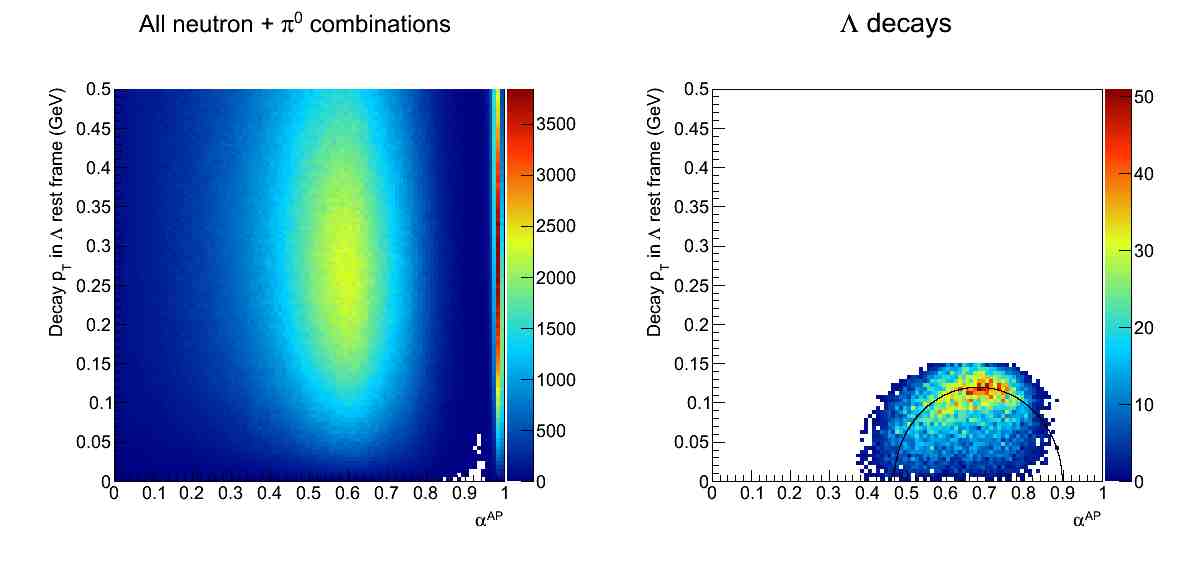
The above described cut is rather similar to cutting along the A-P ellipse. The full sample combinatorics does not show a structure along the ellipse.
Fig. 2. Reconstructed Lambda and Di-photon invariant mass, pre and post cut.
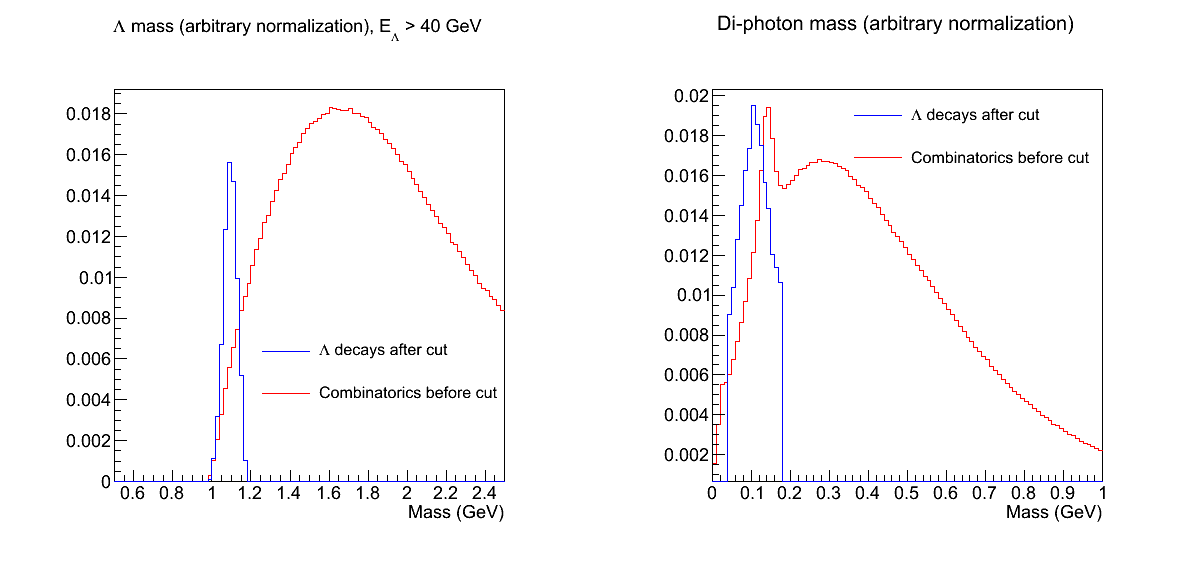
The sharpness of the Lambda mass post-cut is largely due to the carving out effect of the cut. For the pi0 mass, the slight shift for the signal peak is apparent. The origin of this shift is likely the displaced vertex.
Fig. 3. Lambda cut filtering rate
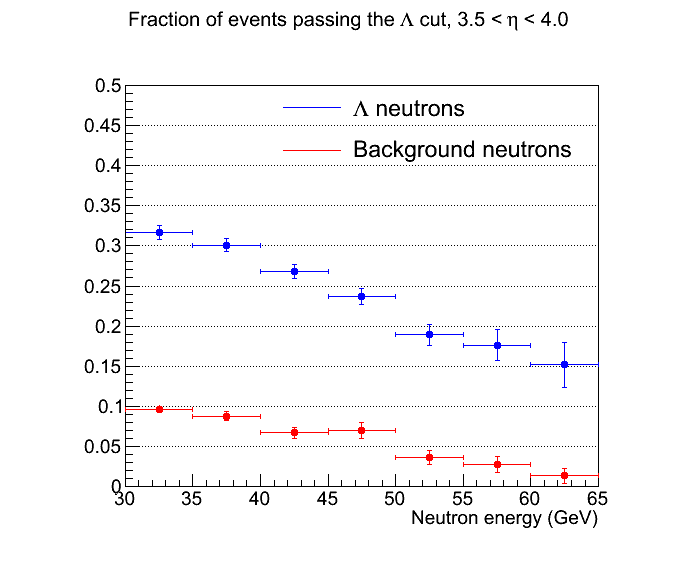
The main source of the background is non-Lambda neutrons, which can combine with di-photon combinatorics to create fake signal. The current cut does a reasonable job of suppressing the background.
Fig. 4. Discriminating power (signal suppression / background suppression)
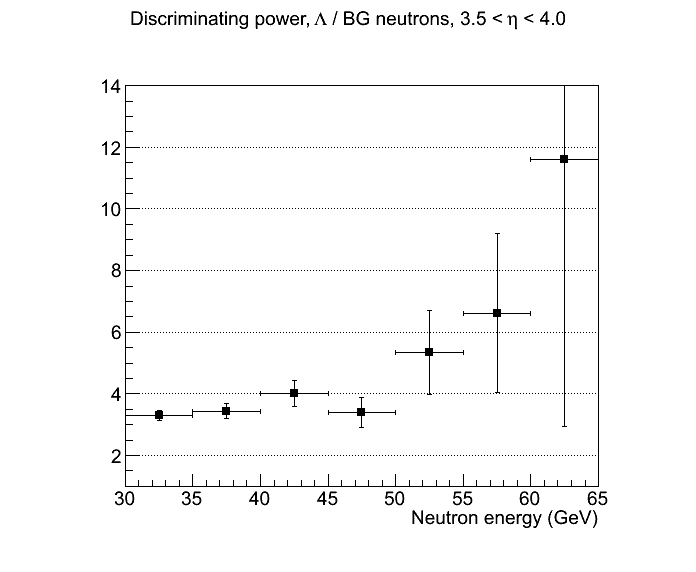
Finally, the decay angle measurement for the signal only is shown below.
Fig. 5. Decay angle in the Lambda rest frame wrt. the Lambda boost axis
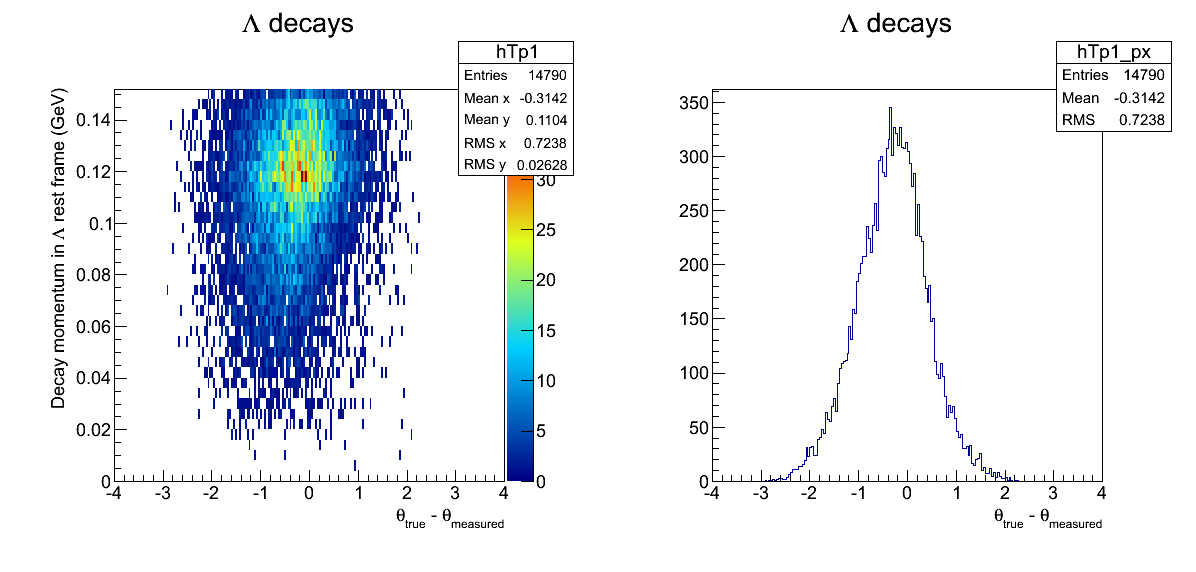
Even if the background suppresion can be improved significantly, the angle measurement (for ~40 GeV Lambdas) shows fairly large error (~0.7 radian, ~40 degrees).
It seems clear to me that if we take the forward hyperon cross-section in Pythia, especially relative to its neutron cross-section, then Lambda measurement would be extrememly difficult. However, it's not clear we can trust Pythia on this as neither cross-sections in the forward region are well known through measurements. IF background can be beat down, angle measurement is possible, but the resolution is rather poor.
- leun's blog
- Login or register to post comments
